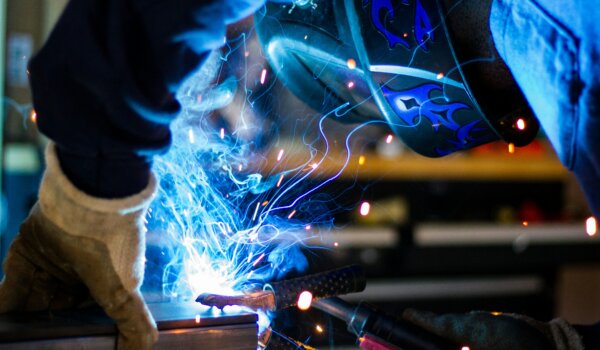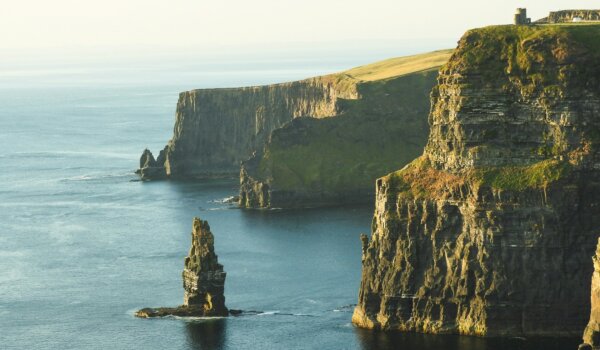In our first blog of this series we showed how Irish clusters rank highly for creativity and innovation, but this is not always feeding into the wider economy. In this blog we look at ideas to scale up clusters in Ireland through more collaboration and internationalisation. We show what the advantages could be and give examples from successful approaches taken in other countries.
The last two years have seen the publication of key pieces of research on clusters on Ireland. IntertradeIreland’s research in 2022 explored the experiences and thoughts of those working in clusters and cluster policy, while this year the Department of Enterprise, Trade and Employment benchmarked existing activity in Ireland against international best practice and outlined emerging policy options.
One theme that emerges from both these reports is the need to scale existing clusters in Ireland. The majority of cluster policy to date has been focussed on seeding rather than scaling clusters, and while this has been successful, there is a strong argument that it is not helping clusters to grow. The result is that many clusters are now operating in silos, often duplicating efforts or missing out on opportunities for growth through collaboration.
However, cluster policy is relatively new in Ireland and the good news is that there remains significant scope for scaling clusters in Ireland. This includes a national policy to improve planning and synchronisation of individual clusters and expanding geographic reach through an all-island approach. This would give clusters more opportunity to reach a critical mass and increase instances of collaboration among highly innovative groups.
But there is a balance to be struck when extending cluster geographies, even in a relatively small country like Ireland. The all-island approach carries a danger of over-consolidation that may diminish local specialisation that is at the heart of much innovation and growth. Therefore we suggest a different approach.
A different approach to scaling clusters
An alternative to the geographic approach is to think of cluster scaling in terms of how modern economies work. We live in a world where the old barriers no longer exist, digitisation and green transition are huge trends impacting all industries, and no one can solve these issues on their own. At the same time the line between sectors is increasingly blared: Toyota now see Google as a competitor, while healthcare innovation is coming as much from Deep Tech as new medicines.
Clusters will always remain a set of interconnected companies operating across narrow sectors, but there is no reason why a cluster in one sector cannot work with a cluster in another sector to solve common problems. As clusters work together, they scale their knowledge by learning from each other and likely add to their membership as more companies gravitate to where the solutions are being found. In Intertrade Ireland’s research, Cluster Managers reported there are many opportunities for inter-cluster collaboration but at present none of this occurs in a co-ordinated manner. Creating the conditions for cluster collaboration is an essential part of scaling the ecosystem.
Learning from others
One example of a cluster emerging stronger from disruption is the Bilbao-based Cluster GAIA (Industry Association of Applied Knowledge and Technologies). In this case the disruption was the shift from analogue electronics to microelectronics in the 1980’s, but since then the cluster has gone on to become a key actor in the regional industrial ecosystem. Its success is in large part down to supporting other clusters through digital disruption. For example, partnerships with advanced manufacturing clusters have helped develop enabling technologies for the digitisation of production.
Flanders is another example of different clusters coming together for mutual benefit, in this case to solve the pressing issue of CO2 emissions from industry. Their ‘Moonshot’ project brings together Catalisti, the spearhead cluster for the Flemish chemical and plastics industry, with a collection of other clusters based on the idea that the expertise required to deliver the necessary innovation can come from many different sources – from food technology to material science, marine technology, logistics and energy.
The advantages of inter-cluster collaboration
Developing inter-cluster collaboration provides an opportunity to scale existing clusters in Ireland while maintaining that local dimension. It should also lead to a stronger all-island approach as clusters start to collaborate with each on projects essential to growth of the whole Irish economy. This can lead to a diffusion of knowledge and innovation across a larger section of the economy and help tackle some of the most pressing challenges for the country.
There is also a strong internationalisation dimension to this approach as inter-cluster collaboration does not need to be confined to the island of Ireland. Linking with clusters in other countries is a fast-track to innovation and Irish clusters should be looking to identify and establish international co-operation projects with clusters. The most obvious route would be with clusters in similar sectors but a more novel approach of combining clusters from different sectors with complementary problems to solve may help to distinguish Irish clusters from those in other markets.
In our next blog we will explore some of the ways clusters can start to scale and build connections with other clusters at home and abroad.



